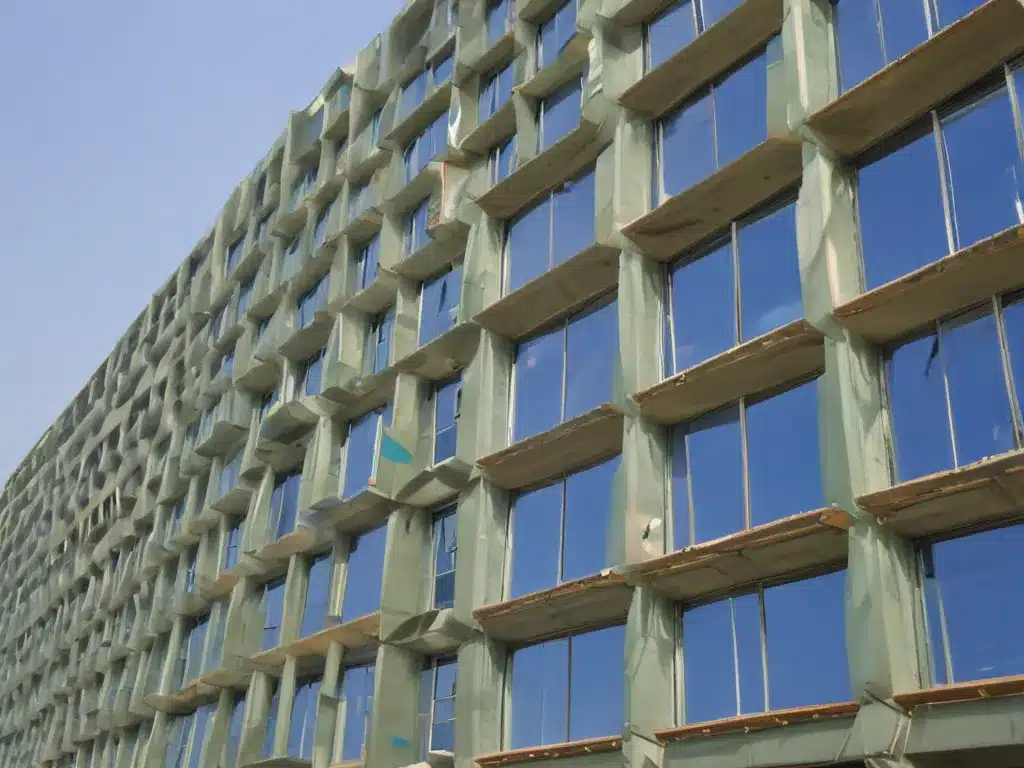
What the Heck is Photocatalytic?
Alright, let’s kick this off by addressing the elephant in the room: what in tarnation does “photocatalytic” even mean? Don’t worry, I won’t bore you with a textbook definition—that’s not my style. Instead, let me paint you a picture.
Imagine you’re chilling in your backyard on a sunny day, sipping an ice-cold lemonade (or a frosty brew, if that’s more your vibe). As you bask in the warmth of those golden rays, something magical is happening all around you. The sunlight is interacting with certain materials, like special types of concrete or tiles, and triggering a chemical reaction that breaks down pollutants and grime. Boom! That’s photocatalysis in action.
The Smog-Busting Superpower
Now, let’s talk about why photocatalytic building materials are like the superhero capes of the construction world. You see, they’ve got this nifty ability to tackle smog—you know, that icky, soupy air pollution that makes cities look like they’re stuck in a perpetual haze.
Here’s the deal: when sunlight hits these special materials, it sets off a chain reaction that transforms icky molecules like nitrogen oxides and volatile organic compounds (VOCs) into harmless substances like water and carbon dioxide. It’s like having a tiny army of invisible smog-busters working 24/7 to keep the air fresh and clean.
But wait, there’s more! Not only do photocatalytic materials help clear the air, but they also have some nifty self-cleaning properties. That’s right, folks, they can literally keep themselves looking spick and span by breaking down dirt, grime, and even those pesky organic stains (we’re looking at you, bird poop!).
The Science Behind the Magic
Alright, alright, I can sense some of you science nerds out there wanting to know the nitty-gritty details. Well, buckle up, because we’re about to dive into the quantum realm of photocatalysis.
At the heart of this smog-busting sorcery lies a special material called titanium dioxide (TiO₂). When this bad boy is exposed to sunlight (or artificial UV light), it gets all riled up and starts producing highly reactive oxygen species, like hydroxyl radicals and superoxide ions. These little guys are like the Navy SEALs of the molecular world, able to obliterate pollutants and organic gunk with extreme prejudice.
But wait, there’s more! These photocatalytic materials can also be souped up with other fancy nanoparticles or doped with certain metals to enhance their performance and efficiency. It’s like giving your smog-busting squad a fancy new set of armor and weapons.
Real-World Applications and Case Studies
Enough with the science mumbo-jumbo, let’s talk about how this technology is being put to use in the real world. One shining example is the iconic Palazzo Italia building in Milan, Italy. This sleek, modern structure is clad in photocatalytic concrete panels that not only look stylish but also actively purify the surrounding air.
According to the building’s designers, those concrete panels have the air-purifying power equivalent to about 50 trees! Can you imagine a city where every building is like a miniature forest, constantly scrubbing the air clean? Talk about a breath of fresh air (literally!).
But it’s not just fancy buildings that are getting in on the action. Cities around the world are starting to incorporate photocatalytic materials into their infrastructure, like pavements, sound barriers, and even public art installations. In fact, if you ever find yourself strolling down the streets of Mexico City, keep an eye out for those snazzy air-purifying murals!
The Future of Smog-Free Living
As more and more cities grapple with the challenges of air pollution and urban smog, photocatalytic building materials are poised to become a game-changer. Imagine living in a metropolis where the very buildings and structures around you are actively working to keep the air clean and breathable.
Of course, like any emerging technology, there are still some kinks to work out. Things like cost-effectiveness, durability, and long-term performance are all areas that need to be fine-tuned. But hey, that’s what innovation is all about, right?
At the end of the day, photocatalytic materials represent a tantalizing glimpse into a future where we can have our urban cake and breathe it too. A future where smog is a thing of the past, and cities can truly become oases of clean, fresh air.
So, if you ever find yourself in the market for a new construction project, why not consider giving those smog-busting, self-cleaning materials a shot? Your lungs (and the planet) will thank you.
Oh, and before I forget, be sure to check out the awesome folks over at https://atchisonconstructioninc.com/. They’re the real MVPs when it comes to incorporating cutting-edge technologies like photocatalytic materials into their projects. Trust me, these guys know their stuff!





